

Playtime With Traditional Japanese Toys
|
Adored for their innovation and revered for their quality worldwide, toys made in Japan have become one of Japan’s signature exports since the 1950s. Corporations such as Nintendo, Bandai, and Takara are household names to many for their high quality modern toys, games, and models that capture the imagination of children worldwide. However, did you know that Japan has a rich collection of traditional toys and games as well?
Before the advent of shiny plastic and handheld consoles, handcrafted toys made from materials such as wood were commonplace in Japan. One example of a traditional wooden toy is Daruma Otoshi. A daruma doll, made up of five pieces, is arranged from top to bottom as such: head (a man’s face), blue, green, yellow, and red. The player then uses a small wooden hammer to hit away each of the coloured pieces – starting with the bottom-most piece – in succession, succeeding when they reach the top piece without letting any of the other pieces fall during the game. Other popular wooden toys include wanage, a game in which players toss rings across a stipulated distance, aiming for a pin, and koma, wooden tops that are spun by hand or with a string, which grew in popularity during the Edo period. Children also play with taketombo, a contraption made of bamboo that resembles the blades of a helicopter. By rolling the stick portion of the taketombo and then tossing it, you can make your taketombo fly high in to the sky. Many of you may also know of kendama, which has enjoyed a resurgence of popularity recently. It is believed to have come to Japan via the Silk Road during the Edo period and was enjoyed by adults as part of a drinking game. It soon grew in popularity with children and many sought to show off their dexterity by tossing the ball and trying to make it land on either of the three cups or on the spike. |
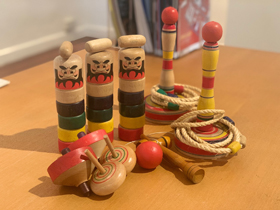 © JCC 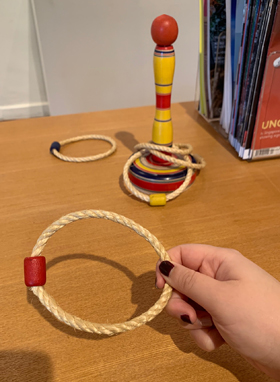 © JCC |
|
There are also traditional Japanese card games. One of Japan’s most well-known card games is karuta. This card game was first introduced to Japan in the 16th century by Portuguese traders, and many have since innovated many ways to play with these cards. One of the most popular variants is known as Uta-garuta. 100 waka poems, taken from the famed Hyakunin Isshu anthology of Japanese poetry, are split across two sets of cards. A reader will read from one set of the cards and the players have to race to find the matching card from the other set before anybody else does. The other popular variant of karuta is known as Iroha Karuta. Waka poems may be difficult for children to memorise and match, and as such, this is a simpler version utilising the 47 syllables of the hiragana syllabary.
Another popular card game amongst children is menko. Menko cards are usually made of cardboard in rectangular or round shapes. They are usually adorned with images of popular characters and bright colours. The aim is to acquire as many menko cards as you can by flipping an opponent’s card over when throwing down one’s own card. This game has been enjoyed by children in Japan for a long time as well, since the 18th century! |
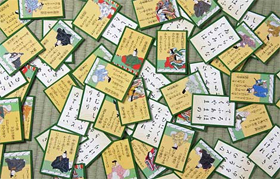 © AFLO 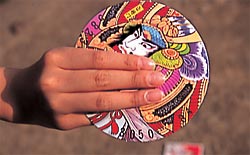 © Web Japan |
|
Although they may seem like timeworn relics compared to the latest battery-operated toys and console games on the shelves, these traditional toys still enjoy immense popularity. In Japan, professional players compete in competitive karuta championships; worldwide, awareness of karuta has grown through the popular manga and anime series “Chihayafuru.” Across the world, kendama competitions are held, with winners being held in high regard.
If you ever want a break from mashing buttons on your console, why not try your hand at one of these traditional toys? |
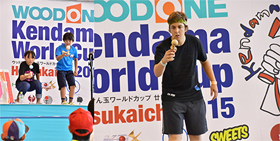 © Global Kenadamas Network |
Resources
|
Bernard, C. (2020). Karuta: Gotta Catch 'Em All!. Tofugu. Retrieved 25 March 2020, from https://www.tofugu.com/japan/karuta-japanese-cards/ |
|
Japan Creative Centre 4 Nassim Road, Singapore 258372 +65 6737 0434 / jcc@sn.mofa.go.jp http://www.sg.emb-japan.go.jp/JCC Nearest parking at Orchard Hotel & Delphi Orchard |
 |